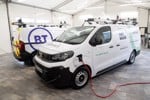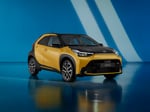Fleets, which have been identified as an important driver in bringing electric vehicles to the wider market, have been warned it could be a decade before they can viably switch to such vehicles.
Questions remain over the reliability, life expectancy and cost of battery technology and, until these are resolved, fleets will resist wide-scale adoption of such vehicles.
Last week BMW chairman Norbert Reithofer said the ultralow-emission Mini Megacity will not be launched here for years.
"Electric cars do not meet all the different mobility demands and there are still too many open questions regarding affordable technology, battery lifecycles and infrastructure,” he said.
“Currently all manufacturers - and our society for that matter - are going through a learning process."
However, carmakers and Government agencies such as Cenex are working towards large scale fleet demonstrations to field test electric vehicles in a drive to get these to market quicker.
Last week Nissan and the northeast regional development agency formed a partnership to develop a zero-emission mobility programme.
The four month programme will drive the use of electric vehicles and includes a study into the introduction and manufacture of electric vehicles in the region.
The programme, which includes an incentive scheme to promote the uptake of zero-emission vehicles, represents an important step towards the launch of electric vehicles in the UK.
Margaret Fay, chairman of the development agency said: “We have the political will, academic research, great engineering industry, but most importantly we are willing to invest in the infrastructure that enables companies to develop their vehicles to a scale that is not available anywhere else.”
Aixam Mega, which already supplies many fleets with ultra-light electric vans, said the recently launched 50by50 Global Fuel Economy initiative will also help drive electric vehicle penetration.
The initiative aims to ensure the global car fleet runs on 50% less fuel by 2050.
However, early adopter fleets face other challenges, according to Axiam general manager Lawrence Holland: "The key to really cutting CO2 emissions is for governments and power generators to invest in developing an electric vehicle charging infrastructure."
Aixam Mega’s e-City vehicles are already being used by fleets, particularly in London where steps have been taken to provide public charging points.
London is at the forefront and a London-based entrepreneur has just unveiled a three-wheeled zero-emission electric vehicle aimed at delivery fleets.
The A-Kar is powered by lithium-ion battery cells and takes five hours for a full charge, giving a range of 70 miles and a top speed of 35mph.
It is expected to cost £6,000 and sales are projected at 30 to 50 vehicles per month.
"There are many four-wheeled electric vehicles manufactures but there aren’t any three-wheeled electric delivery vehicles,” said developer Al-Karim Versi.
EDF and Toyota recently announced a large-scale demonstration of plug-in hybrid vehicles (PHVs).
About 100 PHVs, which are equipped with the latest lithium-ion batteries, will be leased to selected companies in France from the end of 2009 for a three-year trial.
Toyota's main objective is to investigate further the technology and performance of Plug-in Hybrid Vehicles.
EDF's objective is to evaluate different operational options for the charging infrastructure.
UK fleet trials of PHVs started here last year.
The vehicles use a charging system that is able to ensure safe charging, communication between the plug and the vehicle, identification of the vehicle and invoicing of energy.
Meanwhile a Danish island will be used as a test-bed showing how a sustainable mass market in electric vehicles could be built across Europe.
IBM, Dong Energy, Siemens, the Danish government and others teamed up in the Edison project to install and test recharging infrastructure on the island of Bornholm.
This is a prelude to rolling out such networks across Denmark.
The key, said IBM, was linking the recharging system to renewable energy – notably wind power – to maximise carbon-reducing benefits.















Login to comment
Comments
No comments have been made yet.